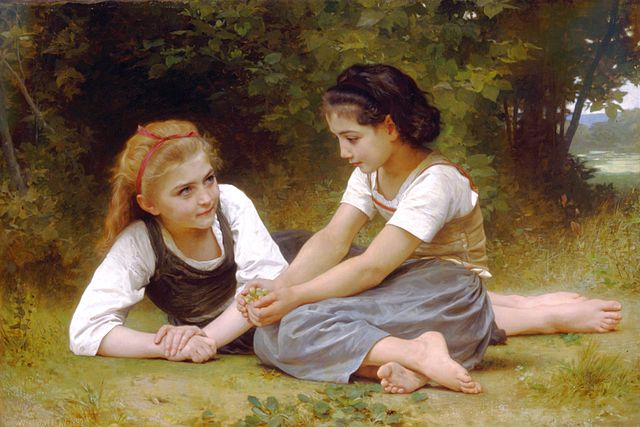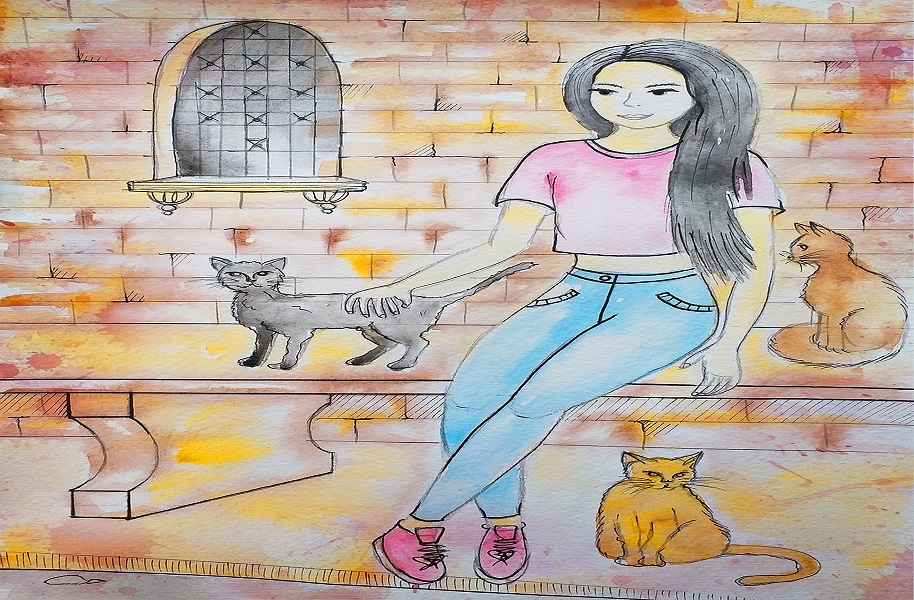Empathy plays out in our world in different forms. If you are someone who plays by group identities and the sufferer belongs to one of the groups you like, empathy certainly takes deeper colours. It is not impossible to empathize if you do not know the group identity of the individual victim but it just gets more difficult from there. From anonymity of group to a sufferer who belongs to a group you detest, empathy keeps fading till it becomes the exact opposite of itself. Magnitude matters too, although inversely. The expression of empathy is most intense when the victim is one and can be identified with markers like name, age, employment status, proximity from the observer, or photographs. When the sufferers cannot be identified as such and number in hundreds or thousands, a cursory sense of empathy appears but yields to indifference in quick time. Empathy manifests with deepest emotions when the object, event, or individual to be empathized with has an element of immediateness to our lives, for example, our family members or friends. However, as gaps of time and distance widen, empathy starts to come in short supply.
But is empathy in itself enough? Can empathy alone provide solutions? While many who have come to be known as ‘armchair activists’ would argue that it can, the history of humanity shows that technological progress right from the invention of the wheel has done more to take people out of their sufferings than empty empathy. Here, it is important to distinguish between people who use empathy as their driving force to act for the good of others and the ones who take credit for all the good happening in the world because they empathize for the weak and the sufferer.
A scientist working for the cure of a deadly disease may or may not be guided by empathy. If he is not guided by empathy, he might be driven by any or all of the following things – an obsession to solve problems that are difficult to solve, fame that would lead to greater wealth and personal well being, or peer competition. If at all such an individual is driven by empathy, he does not stop with expression of that empathy in words. He gets up everyday, walks up to his work, and channelizes his empathy with the help of his intelligence and skills towards solutions. If this individual lacks skills or intelligence, he will either stop at empathy with a whimper or make a living out of empathy exhibition.
Though feeling true empathy is a great first step, we err when we stop ourselves at empathy. Empathy can play the role of a catalyst but a catalyst without reacting compounds can do little. True sympathy needs the reactants to come together in order to produce something more effective. Unfortunately, what we have today amongst us is ‘manufactured empathy’ that is a product of media plots and schemes. What passes as empathy is often just a jolt out of our routine and a reckless expression of fear. Then, the engines of this artificial empathy – the news media and the social media among others take you on a guided tour of your favorite show that you missed last night or throw cute cat memes on your timeline and you are unconsciously driven to a ‘manufactured routine’.
Empathy in isolation is an exercise in self-gratification where you make yourself feel better by thinking that you think about XYZ cause and somehow that makes you a better person than everybody else. Some people who have taken to empathy as their full time job have it even worse. I see them on the front pages of the Internet, TV, and Print, showcasing their empathy as some sort of object to be revered and celebrated. They come, they display their empathy, and then they blame the entire world for the situation. That is their solution. Such empathy can lead you to dark places, mostly towards blaming the system and the society. True empathy will lead you to act to do something for the empathized apart from putting up a self congratulatory facebook status. If your empathy ends at empathy, it is veritably a manufactured empathy that has been cultivated from the outside, cultured for the external world, and waiting for a beholder. That empathy is not enough and it does no good to the world or even you.
Empathy doesn’t work in isolation. Empathy alone doesn’t make you a good person. It may hint at your goodness but it doesn’t mean you are good to the cause or individual you empathize with. All the empathy of the world couldn’t save the two-year old boy Sujith Wilson who died stuck in a bore-well. If empathy could solve problems, he and many others like him in India who die in bore-wells could be saved every time. Empathy must wed intelligence, skills, and action towards solving the immediate problems around you. An intelligent act is to either keep your bore-wells covered or keep your toddlers under supervision all the time. Another intelligent act is to not let your own child drown in a tub while you are busy letting news channels aggrandize your empathy for Sujith Wilson.













 Although the first Indian romantic film, Devdas, released in 1935, Bollywood’s tryst with romance began in 1929 with the Melody of Love, the first talkie film screened in India at Calcutta’s Elphinstone Picture Palace. Bollywood love generally involved singing around trees; close-ups of touching flowers depicting the taboo kiss; love triangles; and extra-marital affairs. While the Bollywood heroine mostly toed the line of tradition and propriety, films like Ijaazat (1987) and Lamhe (1991) attempted to break the Bollywood romance mold. But, even though Indian cinema remained circumspect towards depicting empowered women, TV programming took the lead with shows like Rajani (1984) as housewife turned social crusader, and Udaan (1989) about a woman’s journey of becoming an Indian police officer.
Although the first Indian romantic film, Devdas, released in 1935, Bollywood’s tryst with romance began in 1929 with the Melody of Love, the first talkie film screened in India at Calcutta’s Elphinstone Picture Palace. Bollywood love generally involved singing around trees; close-ups of touching flowers depicting the taboo kiss; love triangles; and extra-marital affairs. While the Bollywood heroine mostly toed the line of tradition and propriety, films like Ijaazat (1987) and Lamhe (1991) attempted to break the Bollywood romance mold. But, even though Indian cinema remained circumspect towards depicting empowered women, TV programming took the lead with shows like Rajani (1984) as housewife turned social crusader, and Udaan (1989) about a woman’s journey of becoming an Indian police officer.


 However, it was the arrival of Queen (2013) that put the spotlight of a box-office success on the able shoulders of its female lead, Kangana Ranaut. Queen featured Ranaut as Rani, a bride spurned a day before her wedding, who decides nevertheless to go on her European honeymoon alone. Breaking the shackles of her typical Delhi upbringing, she encounters friendly strangers and new adventures, making her confident in her independence, even as her fiancé realises his mistake. Adding to Bollywood’s explorations of women’s empowerment and female sexuality was Margarita with a Straw (2014). The film featured Kalki Koechlin as Laila who suffers from cerebral palsy struggling with her love for Khanum (Sayani Gupta), a female activist in Manhattan, even as she copes with her conservative mother’s (Revathy) opposition.
However, it was the arrival of Queen (2013) that put the spotlight of a box-office success on the able shoulders of its female lead, Kangana Ranaut. Queen featured Ranaut as Rani, a bride spurned a day before her wedding, who decides nevertheless to go on her European honeymoon alone. Breaking the shackles of her typical Delhi upbringing, she encounters friendly strangers and new adventures, making her confident in her independence, even as her fiancé realises his mistake. Adding to Bollywood’s explorations of women’s empowerment and female sexuality was Margarita with a Straw (2014). The film featured Kalki Koechlin as Laila who suffers from cerebral palsy struggling with her love for Khanum (Sayani Gupta), a female activist in Manhattan, even as she copes with her conservative mother’s (Revathy) opposition. With Lipstick under My Burkha (2016), Bollywood saw the sexual aspirations of women in small town India unveiled. The rebellious streak features prominently among the four female protagonists, with a feminine camaraderie that is increasingly becoming a major plot point of contemporary Indian cinema with films like Angry Indian Goddesses (2015) and Veere Di Wedding (2018). Not surprisingly, with the increasing influence of women directors such as Meghna Gulzar, Shonali Bose, and Alankrita Shrivastava, women’s representation has moved beyond traditional societal norms, and Bollywood’s heroine is frequently pushing boundaries in the new millennium.
With Lipstick under My Burkha (2016), Bollywood saw the sexual aspirations of women in small town India unveiled. The rebellious streak features prominently among the four female protagonists, with a feminine camaraderie that is increasingly becoming a major plot point of contemporary Indian cinema with films like Angry Indian Goddesses (2015) and Veere Di Wedding (2018). Not surprisingly, with the increasing influence of women directors such as Meghna Gulzar, Shonali Bose, and Alankrita Shrivastava, women’s representation has moved beyond traditional societal norms, and Bollywood’s heroine is frequently pushing boundaries in the new millennium.










